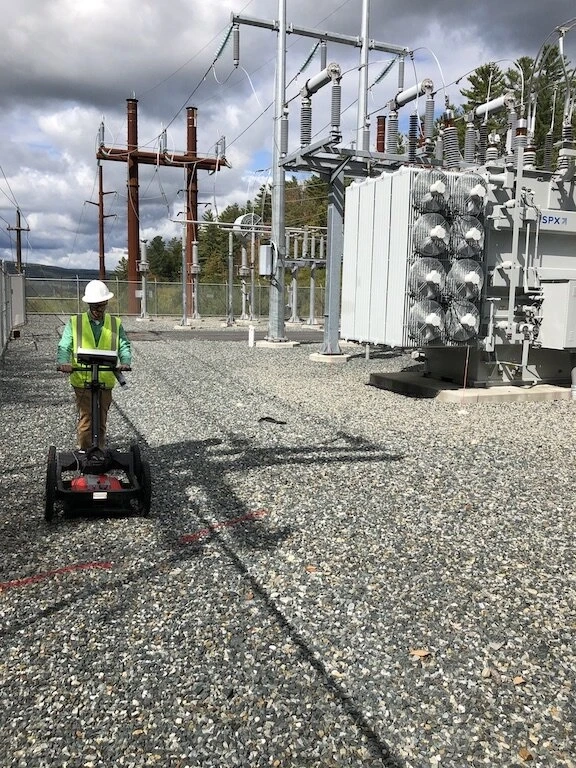Are you starting a new construction project that requires you to scan what lies beneath the ground? First of all, congratulations! You recognize the importance of detecting what is beneath your construction site before excavating.
But if you have no idea why concrete scanning is an important part of a construction process, in this blog, we will explore every detail. To bring reasons, risks, and care associated with GPR scanning, Stay tuned with us.
Subsurface Investigation Importance:
Supporting Construction: Whether planning a commercial or residential building project, knowing if the land can support the decided structure is important. GPR scanning helps identify potential challenges like rock deposits, caves, or underground high-water tables to start construction with a strong base.Detecting Hazards: GPR scanning is also helpful in identifying man-made obstacles such as utility lines or environmental hazards like buried drums of hazardous waste. This knowledge is essential for the safety of workers and to avoid damage to utility infrastructure.Preserving Artifacts: For projects involving archeological digs or conversions of land for farming or recreational use, GPR assists in identifying potential historic artifacts or structures beneath the surface.Accurate Cemetery Maps with GPR:
Creating accurate cemetery maps faces common challenges, and GPR technology proves valuable in overcoming them. The data related to the exact location of graveyards that are buried below the earth's surface is mainly lost and inaccurate. The reasons for inaccuracies include poor record-keeping, loss or degradation of historical records, potential unmarked graves, budget constraints, and knowledge limitations.
How GPR Helps:
Ground penetrating radar services can effectively address these challenges by:
Detecting Grave Shapes: Identifying rectangular shapes indicative of burial locations.Material Detection: Detecting materials like wood or metal associated with caskets or coffins.Locating Soil Shifts: Identifying shifts or voids in the soil that may indicate buried structures or graves.Benefits of Using Ground Penetrating Radar (GPR) in Construction
Ground Penetrating Radar (GPR) has become a game-changer in the field of construction; it offers a number of benefits that enhance efficiency, reduce costs, and eliminate risks. Here are five key advantages of using GPR in construction projects:
Precision without Excavation Costs: Before GPR, obtaining accurate subsurface information often required excavation. Digging is a costly and time-consuming process. GPR eliminates the need for excavation because it provides a non-destructive method to locate underground utilities precisely. This not only saves significant costs but also prevents potential damage to sensitive items like voids. It helps the coring experts by providing them with safe spots to make holes.Noise and Pollution Reduction: Traditional excavation methods like basic drills generate noise pollution that can disturb both workers and nearby residents. The use of heavy equipment contributes to environmental noise, impacting the surrounding community and potentially leading to legal issues. GPR can drill quietly (you can also use a silencer) because it is a non-intrusive technology. This is useful in urban settings where working sites can be adjacent to schools, hospitals, and worship places.Versatility Across Different Terrains: GPR is a versatile tool as it can effectively penetrate various materials, including soil, concrete, and asphalt. Whether dealing with loose soil, densely packed dirt, or solid concrete, GPR provides reliable and detailed information about subsurface conditions. This versatility makes it perfect for a range of construction sites. It can also be used to check delamination and corrosion inside the concrete slab; therefore, concrete scanning is a super helpful tool for scanning and testing.Proactive Problem Prevention: Ground penetrating radar services empowers construction teams to identify potential challenges before breaking ground. This useful approach allows for early detection of issues such as loose soil, erosion-prone areas, or unidentified structures. It helps to know the condition of concrete bridges and old structures and repair them at the right time. By knowing these concerns in the planning phase, construction teams can implement solutions to prevent delays, accidents, and costly downtime. GPR-driven insights contribute to more efficient project management and long-term cost savings.Optimized Work Efficiency and Cost Estimates: GPR scanning has the ability to provide accurate subsurface data and help with project planning and execution. Construction teams can optimize their work processes, resulting in more precise cost and time estimates. This improved accuracy enhances overall project efficiency, enabling teams to meet deadlines with confidence. The increased reliability in project planning positively impacts a company's reputation, as it demonstrates professionalism and a commitment to delivering quality results.Conclusion:
As a leading provider of GPR scanning services, Concrete Insight understands the importance of subsurface investigations in construction and the unique contributions of GPR in addressing challenges in cemetery mapping.
We provide concrete scanning, coring, and testing services, and by incorporating state-of-the-art technology, we aim to ensure precision, safety, and efficiency in all our services. Explore the depth of possibilities with our GPR solutions for your construction needs today!
FAQs about Ground Penetrating Radar (GPR) in Construction:
Q1: Why is subsurface investigation crucial in construction projects?
Ans: Subsurface investigation ensures a strong construction foundation, identifies hazards, and aids in preserving artifacts or historical structures.
Q2: Can GPR be used across different terrains in construction?
Ans: Yes, GPR is versatile, penetrating various materials like soil, concrete, and asphalt, making it suitable for different construction site conditions.
Q3: What benefits does GPR offer in terms of project efficiency and cost estimates?
Ans: GPR optimizes work efficiency, providing accurate subsurface data for better project planning, resulting in precise cost estimates and timely project completion.


